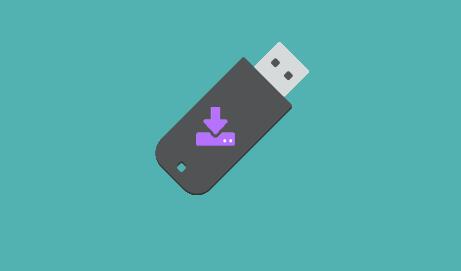1. R Data Formats
RData: This is a binary format used to store R objects. It can hold multiple objects such as data frames, lists, vectors, and functions. When you save your workspace in R, it is often saved as an .RData file.
CSV (Comma – Separated Values): A text – based format that is very common for storing tabular data. While not an R – specific format, it’s widely used and can be easily imported and exported from R. Data frames in R can be saved as CSV files, which can then be transferred to other applications or storage devices like a flash drive.

Locate the Flash Drive:
2. Saving an RData File
Insert your flash drive into the computer’s USB port. Wait for the computer to recognize it. On most operating systems, the flash drive will be assigned a drive letter (e.g., E: on Windows or /Volumes/USB_DRIVE on Mac).
Set the Working Directory:
In R, you need to set the working directory to the location of your flash drive. You can do this using the setwd() function. For example, if your flash drive is assigned the letter E: on Windows, you would use the command setwd(“E:/”). On a Mac, if the flash drive is mounted as /Volumes/MyFlashDrive, you would use setwd(“/Volumes/MyFlashDrive”).
Save the RData File:
Once the working directory is set, you can save your R objects as an .RData file. Suppose you have a data frame called mydata and a vector called myvector that you want to save. You can use the save() function like this:
R
mydata <- data.frame(x = 1:5. y = c(“a”, “b”, “c”, “d”, “e”))
myvector <- c(10. 20. 30)
save(mydata, myvector, file = “myobjects.RData”)
The file argument specifies the name of the .RData file that will be created on the flash drive.
3. Saving as a CSV File
Converting and Saving:
If you want to save a data frame as a CSV file, you can use the write.csv() function. For example, if you have the mydata data frame from above, you can save it as a CSV file like this:
R
write.csv(mydata, file = “mydata.csv”)
By default, the write.csv() function includes the row names as a column in the CSV file. If you don’t want to include row names, you can set the row.names argument to FALSE:
R
write.csv(mydata, file = “mydata.csv”, row.names = FALSE)
Appending Data:
If you want to append data to an existing CSV file, you can use the write.table() function with the append = TRUE option. For example, let’s say you have new data in a data frame called newdata and you want to add it to the mydata.csv file:
R
newdata <- data.frame(x = 6:10. y = c(“f”, “g”, “h”, “i”, “j”))
write.table(newdata, file = “mydata.csv”, append = TRUE, sep = “,”, col.names = FALSE)
The sep argument specifies the separator (in this case, a comma for a CSV file), and the col.names argument is set to FALSE to avoid writing the column names again if you are appending data.
4. Considerations and Troubleshooting
File Permissions:
On some operating systems, you may need to have the appropriate permissions to write to the flash drive. If you encounter an error when trying to save the file, make sure that the flash drive is not write – protected and that your user account has the necessary write permissions.
File Naming:
Avoid using special characters in the file names that may not be recognized by the operating system or R. Stick to alphanumeric characters, hyphens, and underscores to ensure compatibility.
Data Integrity:
Before removing the flash drive, it’s a good idea to double – check that the file has been saved correctly. You can try re – importing the file into R from the flash drive to make sure the data is intact and in the expected format.
In conclusion, saving R data files to a flash drive involves understanding the appropriate file formats, setting the correct working directory, and using the proper R functions to save the data. By following these steps carefully, you can ensure that your data is safely stored and can be easily transferred and accessed later.
About us and this blog
Panda Assistant is built on the latest data recovery algorithms, ensuring that no file is too damaged, too lost, or too corrupted to be recovered.
Request a free quote
We believe that data recovery shouldn’t be a daunting task. That’s why we’ve designed Panda Assistant to be as easy to use as it is powerful. With a few clicks, you can initiate a scan, preview recoverable files, and restore your data all within a matter of minutes.
Subscribe to our newsletter!
More from our blog
See all postsRecent Posts
- How to recover a deleted slide in powerpoint? 2025-02-27
- How to recover deleted capcut videos? 2025-02-27
- How to recover a file deleted from a shared drive? 2025-02-27










